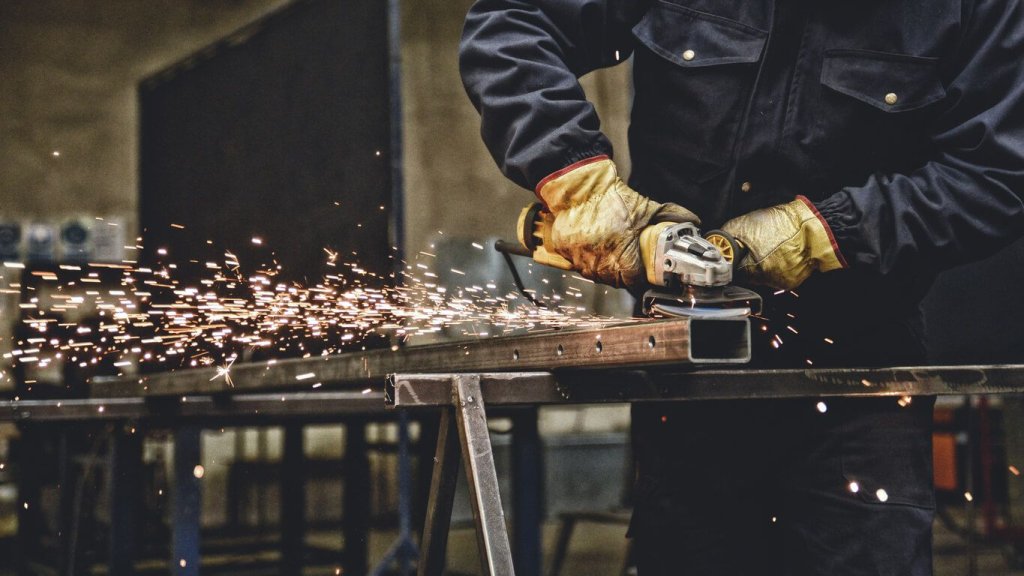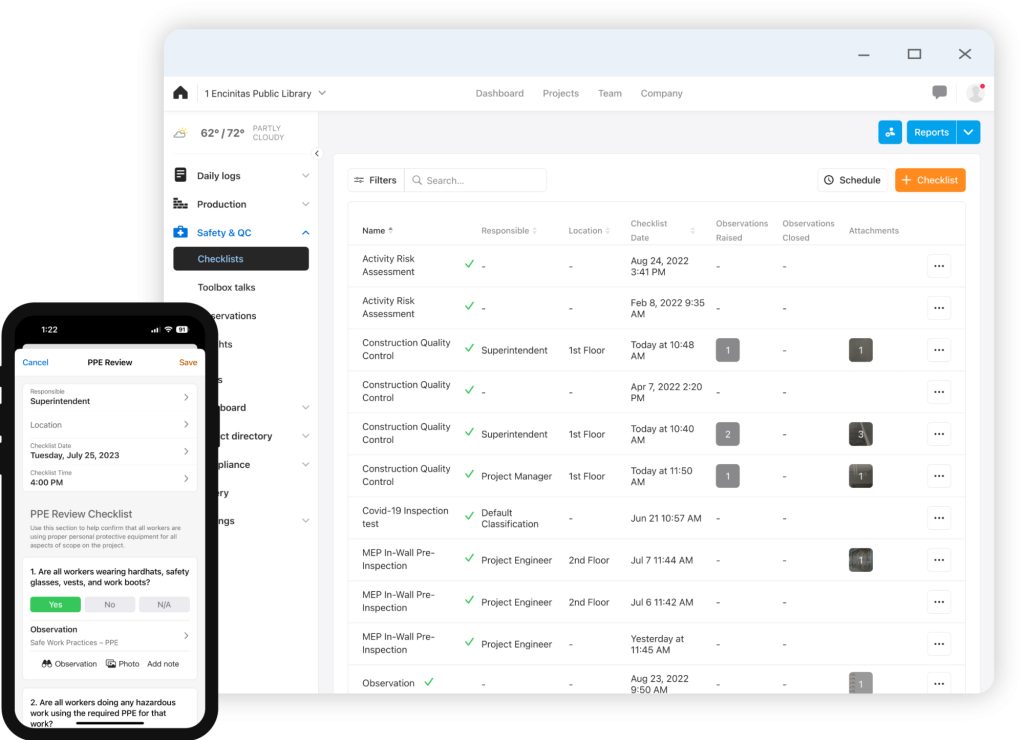Hand tools and power tools are the most commonly used construction equipment.
Hand tools are any manually-operated equipment like hammers, wrenches, and screwdrivers. Power tools are powered equipment like drills, saws, and sanders. They may utilize electricity, hydraulics, pneumatics, liquid fuel, or other power sources.
Contractors use hand and power tools to accomplish everyday tasks efficiently.
Following best safety practices when using hand and power tools prevents accidents and injuries. While there may be specific safety requirements for each piece of equipment, contractors can follow universal hand and power tool guidelines to protect themselves and their colleagues on the job.
Completing a checklist that covers general safety concerns helps contractors ensure their tools are in good working order and their workspaces are hazard free.
The Occupational Health and Safety Administration (OSHA) recommends that employees be trained in the proper use of all hand and power tools.
Safety training helps prevent several common hazards.
The most frequent cause of injuries from hand tools is improper use.
For example, contractors may try to use a chisel as a screwdriver in a pinch, causing the tip to break off and strike a nearby coworker. Or they may use the wrong type of hammer, which slips off a nail and strikes them.
Contractors may also be injured if they are not wearing the right personal protective equipment (PPE) when working with hand tools.
Anytime workers use the wrong tool for a task or try to use a tool for anything other than its intended purpose, they put themselves and their colleagues in danger.
Another common hand tool hazard is improper maintenance. Tools that are damaged are more likely to break during use, potentially leading to injuries.
Contractors should store their tools properly and securely and routinely inspect them for wear and tear.
Power tools are also subject to misuse and damage. Improperly used or mishandled power tools can break or fail in ways that lead to serious injury.
Electric drills, saws, and other power tools are designed to help workers complete tasks much more efficiently and effectively than they could with manually-operated equipment, making them very dangerous. It is especially important to observe safety guidelines and wear the proper PPE when using power tools.
Using power tools also comes with the added hazards of electrocution, burns, and explosions depending on the equipment’s power source. In addition to inspecting the tool itself before use, contractors should check the mechanisms by which it generates power and follow best practices to prevent related accidents.
These tips will help you keep hand and power tool safety top of mind as you complete project work.
1. Review your daily tasks.
What work needs to be done today? What are the right tools for these tasks? Work should not begin until every tool that’s needed is accounted for.
Examine each hand or power tool you and your crew will be using in detail. Check for damages—like cracks, dents, or mushrooming—and ensure guards and other protective equipment are properly installed when possible.
Replace or send damaged tools for repairs immediately.
3. Inspect the power source.
If you are using power tools, thoroughly examine the power source. Are all wires and cords in good condition? Does the tool have enough fuel?
Confirm your power source is safe and stable.
4. Wear your PPE.
Be sure to wear your PPE properly. Gloves and eyewear are commonly required when working with hand and power tools.
5. Monitor progress.
Monitor the jobsite as your task is completed. Be sure to keep the workspace clear of obstacles and distractions and document any damages or safety hazards that occur.

